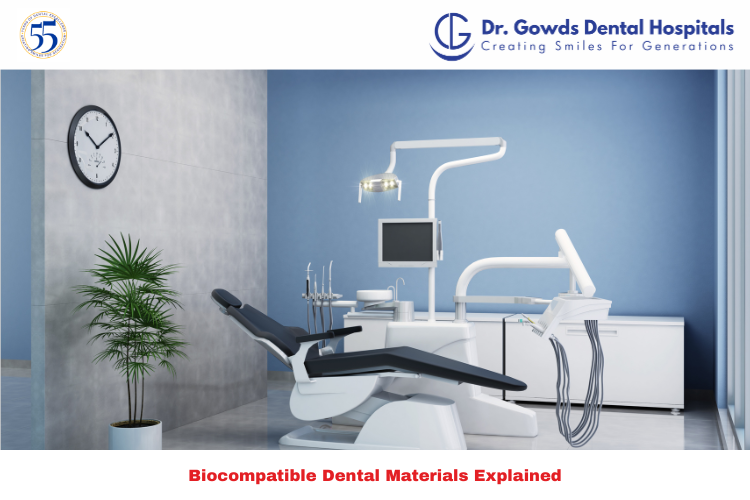Schedule Appointment




Dental technology has come a long way. Beyond the advanced tools and digital diagnostics, there’s another crucial factor driving better outcomes—the materials used in your treatment.
When you receive a crown, implant, or filling, it stays in your body for years, sometimes decades. Choosing safe, well-tested materials isn’t just a preference—it’s a health decision. That’s where biocompatible dental materials come in. These materials are specifically chosen to work in harmony with your body, reduce reactions, and improve longevity.
Biocompatible dental materials are substances used in dental treatments that don’t trigger adverse reactions in the body. They are non-toxic, non-inflammatory, and hypoallergenic. Whether it’s a filling, crown, or implant, the goal is to use materials that support healing and won’t irritate or damage surrounding tissues.
These materials are rigorously tested for their biological response. When introduced into the body, they’re expected to integrate seamlessly without causing inflammation, allergic reactions, or tissue damage.
Zirconia is a strong, ceramic-based material commonly used for crowns, bridges, and implants. It’s metal-free, highly durable, and extremely resistant to wear. It’s often selected for patients with metal allergies or for those seeking natural aesthetics.
Titanium has long been the gold standard in dental implants. It’s exceptionally strong and integrates naturally with bone through a process known as osseointegration. It rarely causes allergic reactions and is known for its long-term success in implantology.
Used for aesthetic restorations like veneers and crowns, lithium disilicate offers a natural, tooth-like translucency along with strength. It is well-tolerated by oral tissues and offers an excellent combination of beauty and function.
Modern composites are often free from BPA and other potentially harmful additives. These tooth-colored materials are used in fillings and bonding procedures, providing both safety and cosmetic appeal.
This fluoride-releasing material is often used in pediatric and restorative dentistry. It bonds chemically with tooth structure and supports remineralization while being gentle on tissues.
Bioactive materials like calcium silicate-based cements are increasingly used in root canal treatments and pulp therapies. They support natural healing by encouraging the formation of dentin and sealing off harmful bacteria.
Traditional materials like amalgam and certain metal alloys may cause allergic responses or sensitivities in some patients. Biocompatible alternatives such as zirconia or titanium significantly reduce these risks.
Materials like bioactive glass and bioceramics not only avoid irritation—they actively promote healing and support tissue regeneration.
Ceramic-based materials offer excellent color-matching with natural teeth, providing restorations that blend in seamlessly.
These materials are engineered to withstand the pressures of daily chewing while maintaining structural integrity over many years.
For patients concerned with systemic exposure to mercury or BPA, choosing biocompatible options offers peace of mind. Reducing toxic burden contributes to overall well-being.
Your health doesn’t stop at your mouth. The materials used in your dental care impact both your oral condition and your overall wellness. Biocompatible dental materials offer a safer, more modern approach to dental treatment—without compromising performance or aesthetics.
Before your next dental procedure, have a conversation with your dentist. Ask about the materials being used, especially if you have allergies, sensitivities, or are looking for metal-free options. Being informed helps you take control of your care—and ultimately protect your long-term health.
Visit us at–
While no material is 100% hypoallergenic, biocompatible options are tested and validated for their safety across a wide population.
In some cases, yes. However, they often offer better long-term performance and fewer complications, which can reduce costs over time.
Your dentist should discuss material choices during treatment planning, especially if you have known sensitivities or specific concerns.
Amalgam is still used in some practices, but many dentists now recommend safer, more aesthetic alternatives. Replacing them should be done only when necessary and under professional guidance.
In most cases, yes. However, the suitability may depend on the location of the restoration, the function required, and individual case needs.